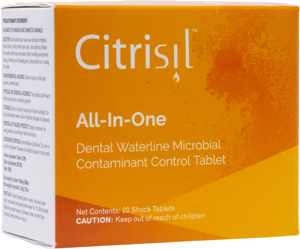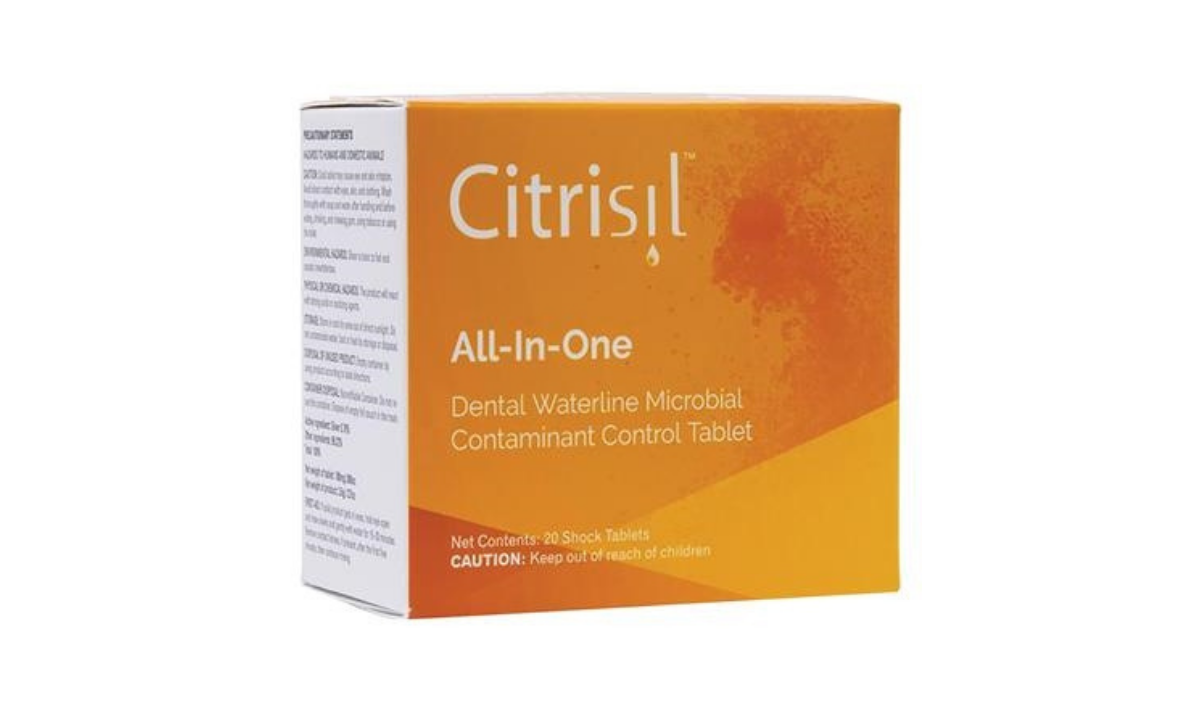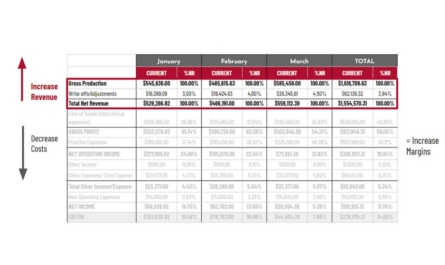EGP New Products
 Waterline shock treatments are an integral part of any waterline treatment program. Shock contains a concentrated dose of chemical treatment intended to drastically reduce the bacterial load in the dental waterline. Without a shock treatment, your waterline program is likely to fail.
Waterline shock treatments are an integral part of any waterline treatment program. Shock contains a concentrated dose of chemical treatment intended to drastically reduce the bacterial load in the dental waterline. Without a shock treatment, your waterline program is likely to fail.
Sterisil’s Citrisil shock tablets feature non-toxic, non-corrosive, ionic silver to kill odor-causing bacteria and clean dental unit waterlines. You need only measure six ounces of water in your bottle and drop the tablet. As the tablet dissolves, the orange tinted treatment indicator lets you know when the water has been dosed and is ready for introduction into the dental unit. Run your handpieces until you see the shock and stop. The shock sits in the line overnight and can be purged in the morning. It’s that simple!
With an EPA quantified claim for effectiveness of ≤10 CFU/ml, Citrisil tablet shock leads the shock category with 50 times the effectiveness of the next leading competitor. When you pair that with any of Sterisil’s powerful dental waterline maintenance products, you have a long-term solution to waterborne microbial contamination.
All EPA registered waterline treatments intended for continuous use specify employing a registered shock treatment to attain the advertised effective level of bacterial reduction. Doing so ensures the initial microbial reduction needed to maintain compliant bacteria levels throughout the maintenance product’s lifespan. When you pair Citrisil™ shock tablets with any existing waterline maintenance program, you complete the protocol. You need only ensure you avoid mixing chemicals in the waterline.
Compatibility among shock and maintenance treatments are key for long-term success. Unwanted chemical interactions in the dental unit can impede long-term maintenance efforts before they’ve had a chance to be effective. Citrisil shock tablets are the only shock treatment that is fully compatible with any Sterisil product.
Clinicians should ask themselves whether they have a response for a breach protocol or a failed water test. Often, clinics will purchase some sort of maintenance treatment, train their staff on how to use it, and stop there. But understanding how to respond to test failures or breaches in protocol may not be in their repertoire. Depending on the clinic, they may choose to shut the chair down and seek help from the manufacturer, delaying the inevitable and costing the practice money with the downtime. Test failures and protocol breaches are common and should be expected. Stocking the supply closet with shock, and ensuring they know how and when to use it, will save them time and money over the long term.
In addition, clinicians must be aware of what the labels require or recommend. Some clinics may not realize their maintenance products require an initial shock treatment. Product statements like, “To obtain maximum bacteriological reduction, dental unit waterlines are to be cleaned with an approved dental unit waterline agent prior to initial installation…” are a cue to employ a shock treatment for best results.
No one is perfect. Mistakes are made. Once your clinic is aware that the work is ongoing with waterline treatment, you will need a response if something goes wrong. Shock treatments enable you to restart your treatment cycle without having to replace product.
Editor’s note: Sponsored by Sterisil.




